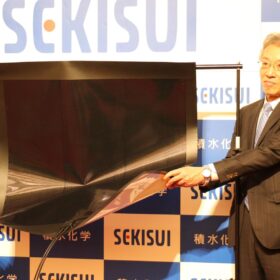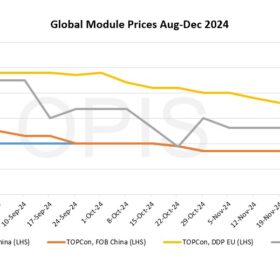Sekisui Chemical launches pilot perovskite PV projects in Japan
Japanese plastics manufacturer Sekisui Chemical, which recently invested in a 100 MW perovskite solar production plant, announced its latest demonstration project at two sites owned by Japan’s MUFG Bank. The project aims to both raise awareness of practical applications of perovskite solar PV technology and to further verify durability, weather resistance, and performance.
The best hole transport layers for perovskite solar cells
An international team has combined organic synthesis with predictive models to discover new functional materials that enhance performance of hole transport layers used in perovskite solar cells. The team asserts that optimizing for other solar cell properties is possible with the platform, as well as using it for development of materials for other kinds of devices.
New research sheds light on impact of sodium-induced degradation in heterojunction solar cells
University of New South Wales researchers investigated the impact of sodium-induced degradation in heterojunction solar cells under accelerated damp-heat testing. They considered three different types of sodium salts and identified the degradation mechanisms attributed to each contaminant.
Perovskite solar cell based on hole-selective interlayer achieves 26.39% efficiency
Researchers in China claim to have built a perovskite solar cell that can effictively reduce ion migration and offer superior stability. The device utilizes an ultrathin membrane made of a polymeric material known as PDTBT2T-FTBDT (D18), which reportedly offers conformal coverage on the surface of perovskite film due to its high fluidity.
New tech to reduce oxygen defects in Czochralski wafers
Research from the Chin-Yi University of Technology in Taiwan revealed a novel heater design in the Czochralski silicon crystal growth process that can control and decrease oxygen concentration without incurring the costs associated with other methods, such as installing magnets or using alternative crucible materials.
Sekisui Chemical invests in 100 MW perovskite solar production line
Japanese plastics manufacturer Sekisui Chemical is investing in a 100 MW production line to make lightweight perovskite solar panels for low load-bearing rooftops, with an operational start in 2027. It will also acquire a production facility from Japanese electronics manufacturer Sharp.
Prospects for reusing silicon from end-of-life solar modules in new ingot production
Scientists in the Netherlands proposed a new testing scheme for recycling silicon from end-of-life photovoltaic panels. Their methodology helped create different wafer categories for recycling silicon for new ingot production but also showed that most of recycled silicon in the near future will come from p-type products, which will harldy be reutilized in a market now dominated by n-type modules.
Perovskite-HJT tandem solar cell based on phosphonic acid, self-assembled monolayer achieves 30.22% efficiency
Researchers in Switzerland have fabricated a perovskite-silicon tandem solar cells that utilizes a heterojunction cell as bottom device. The cell is said to circumvent the film formation issue associated with the use of phosphonic acid and achieve high efficiency levels.
Bifacial perovskite solar can achieve bifaciality of 90% when tilted at 20 degrees
New research from India has shown that bifacial perovskite solar cells can achieve a 2% higher power conversion efficiency with a tilt angle of 20 degrees. The scientists also developed a bifacial perovskite solar cell for applications in both tandem or single-junction PV devices.
Global solar module prices stable-to-firm as markets wind down for year end
In a new weekly update for pv magazine, OPIS, a Dow Jones company, provides a quick look at the main price trends in the global PV industry.









